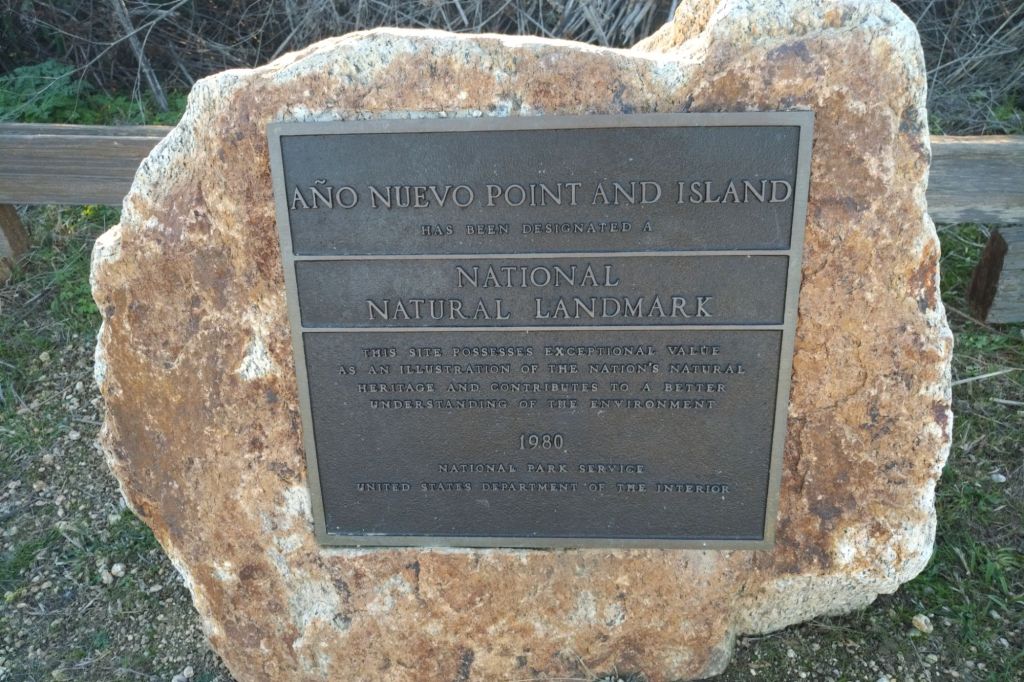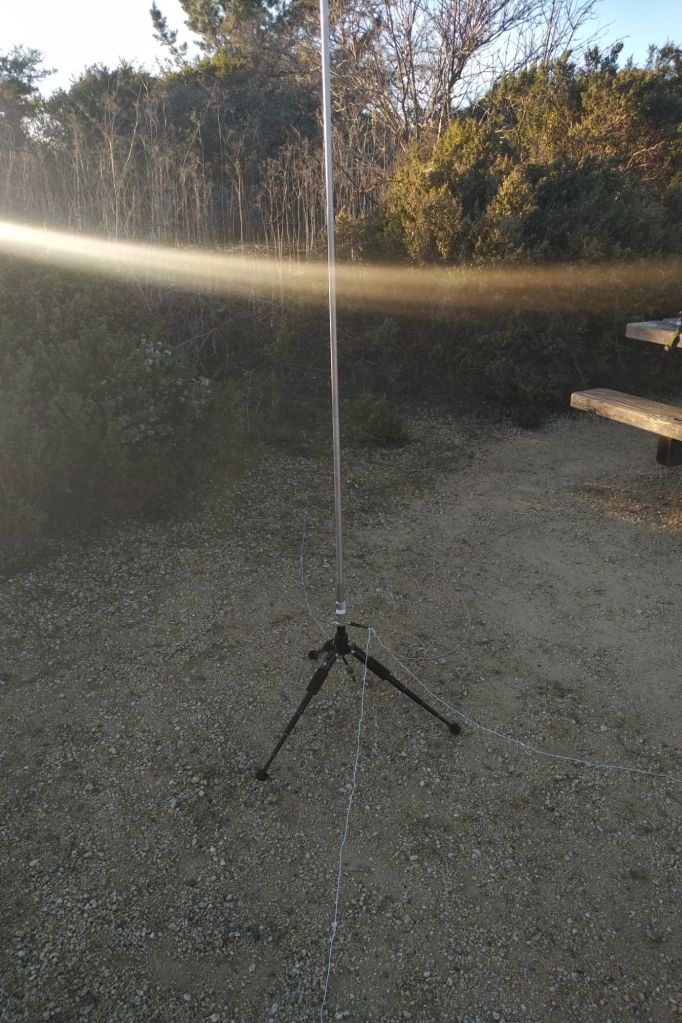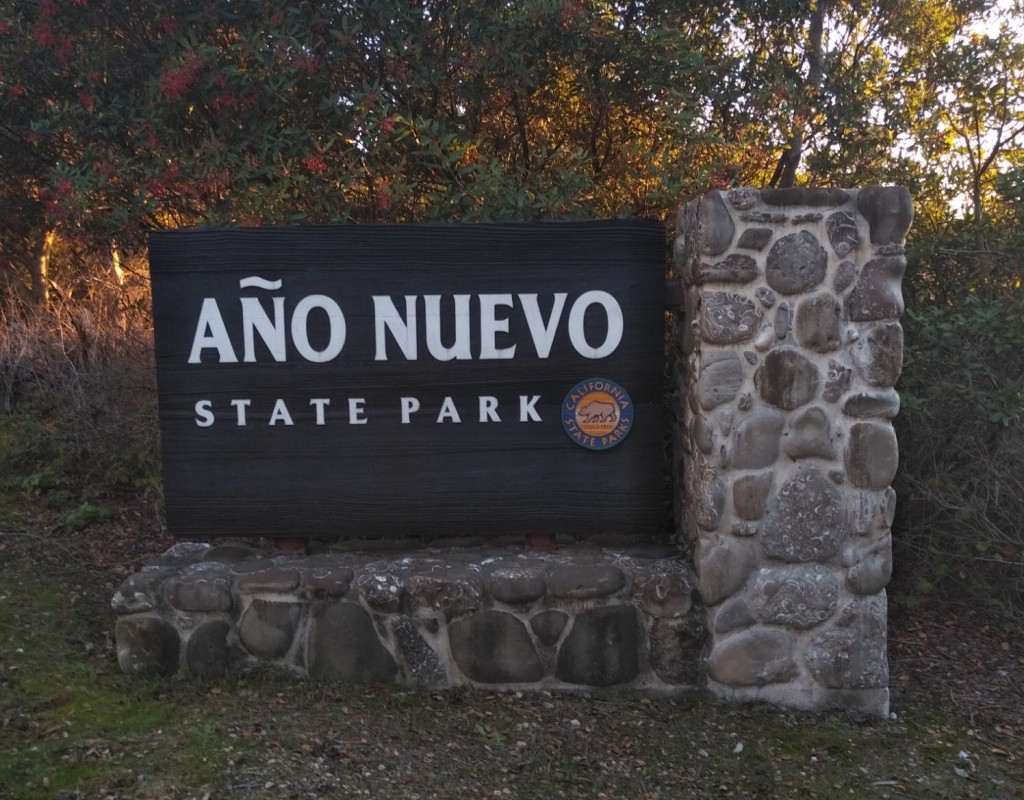One of our family’s annual traditions is to venture down U.S. Highway 101 to a Christmas tree farm called Rancho Siempre Verde (RSV).

The several years of dry conditions put a strain on Christmas tree production at RSV, so our annual visits have become an more opportunity for picnicking, wreath making, and enjoying the natural beauty of California’s central coast.

Part of the natural heritage is Año Nuevo point, known for being the winter home of a large colony of Elephant seals, and is a State Park located less than a mile from RSV.

Prior to becoming a State Park, the low coastal plain around Año Nuevo was the site of the Cypress Dairy Ranch which produced butter and cream in the late 19th and early 20th centuries. The ranch buildings became part of the park infrastructure, with the visitor center occupying an old barn.

As a California State Park, Año Nuevo is also a POTA reference, K-1125. And seeing as I was in the neighborhood, an activation attempt was certainly on the agenda.

This time of year 00:00 UTC is 4:00 in the afternoon and darkness falls soon after that. We left RSV after 3pm, so I had less than an hour to get the 10 contacts needed for a complete POTA activation.

There is a whole corral of picnic tables near the visitor center, but some of them were occupied. Besides, I always try stay out of the way when activating a popular location so as to not spoil the experience for other visitors or raise the ire of park staff with my various wires and antennas. As such, I opted to use an empty group of picnic tables adjacent the large parking lot.

Knowing that cell service is non-existent along this portion of coast, I scheduled the activation ahead of time to take advantage of the Reverse Beacon Network and get spotted automatically on the POTA web app.

With time running short, I opted for the quick deployment of the Mountaintopper MTR-4B connected to a tripod mounted 20M quarter wave vertical telescoping whip. The FT-818 as well as EFHW and Spiderbeam mast were in the trunk of the car but that station takes a bit more time to setup up.

The MTR-4B showed an SWR reading of 1.5 to 1 and an output power between 3.5 and 4 watts, good enough! Using the message memory function on the Mountaintopper, I started calling “CQ POTA” while simultaneously preparing the logbook.

After several CQ calls I started getting responses. This told me that RBN picked up my signal and the POTA web app responded by spotting the activation scheduled earlier.
Experience has shown that getting QRP contacts with North American stations can be a challenge when located at the oceanside base of the coastal mountain range, so I was mentally prepared for a scrape to get the 10 required QSOs with less than an hour to operate before the clock ran out on the UTC day.

I needn’t have worried though. The first contact was logged at 23:20z, followed by a steady stream of hunters for the next 35 minutes. I sent QRT at 23:55z with 28 QSOs in the book. Activation complete!

The radio operation was secured as quickly as it was deployed and I met the rest of the family, who had just returned from the hike out to the beach to observe the Elephant seals.

We made a brief stop at the Pigeon Point Light Station to catch the sunset, then made our way 50 miles back the home QTH in the dark.


Leave a comment